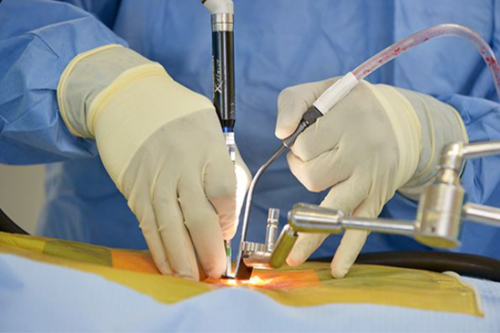Meet Our Doctor
Dr. Paresh Bang

Minimally Invasive Spine Surgery In Nagpur

Minimally Invasive Spine Surgery (MISS) refers to a set of surgical techniques that aim to treat various spinal conditions with minimal disruption to surrounding tissues. The primary goal of minimally invasive spine surgery is to achieve the same surgical objectives as traditional open spine surgery while minimizing damage to muscles, ligaments, and other structures. This approach often results in smaller incisions, reduced postoperative pain, faster recovery times, and shorter hospital stays.
Minimally invasive techniques can be used to treat a variety of spinal conditions, including herniated discs, spinal stenosis, spinal deformities, and more. The specific procedure chosen depends on the patient’s diagnosis and the surgeon’s expertise.
Minimally Invasive Spine Surgery Procedure
Patient Evaluation: Before the surgery, the patient undergoes a thorough evaluation, which may include imaging studies such as X-rays, MRI, or CT scans. The surgeon reviews the patient’s medical history, symptoms, and diagnostic results to determine the most appropriate surgical approach.
Anesthesia: The patient is placed under general anesthesia or, in some cases, conscious sedation. The choice of anesthesia depends on the specific procedure and the patient’s medical condition.
Tubular Retractors or Endoscope Insertion: Depending on the specific technique used, the surgeon may insert tubular retractors or an endoscope through the small incisions. Tubular retractors create a tunnel-like pathway to the spine, while an endoscope is a thin tube with a camera and light source for visualization.
Visualization: With the aid of advanced visualization technology, such as a microscope, endoscope, or specialized camera system, the surgeon obtains a clear and magnified view of the surgical site.
Diseased Tissue Removal or Correction: Using specialized instruments inserted through the small incisions, the surgeon removes or corrects the diseased or damaged tissue.
Implant Placement (if needed): In cases where spinal fusion is part of the procedure, the surgeon may place implants such as screws, rods, or interbody cages to stabilize the spine and promote fusion.
Closure of Incisions: Once the surgical objectives are achieved, the surgeon closes the small incisions with sutures or adhesive strips. The skin is closed with minimal scarring.
Recovery and Observation: The patient is monitored in the recovery area. Depending on the specific procedure and the patient’s condition, they may be observed for a brief period before being discharged.
